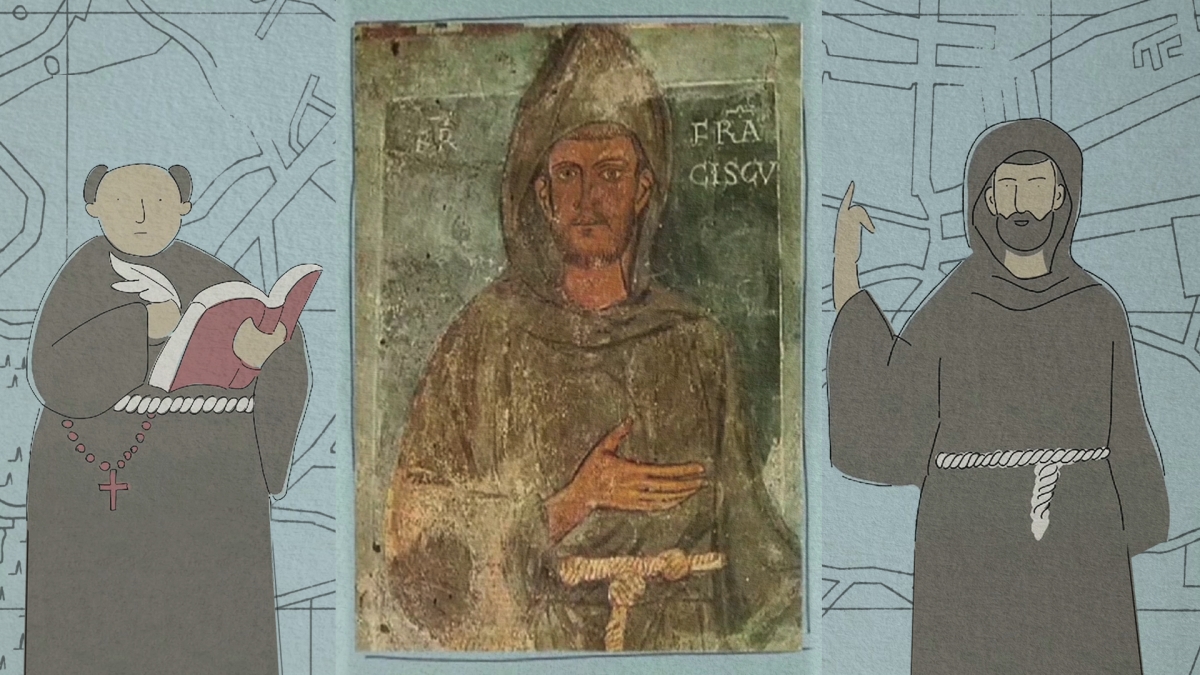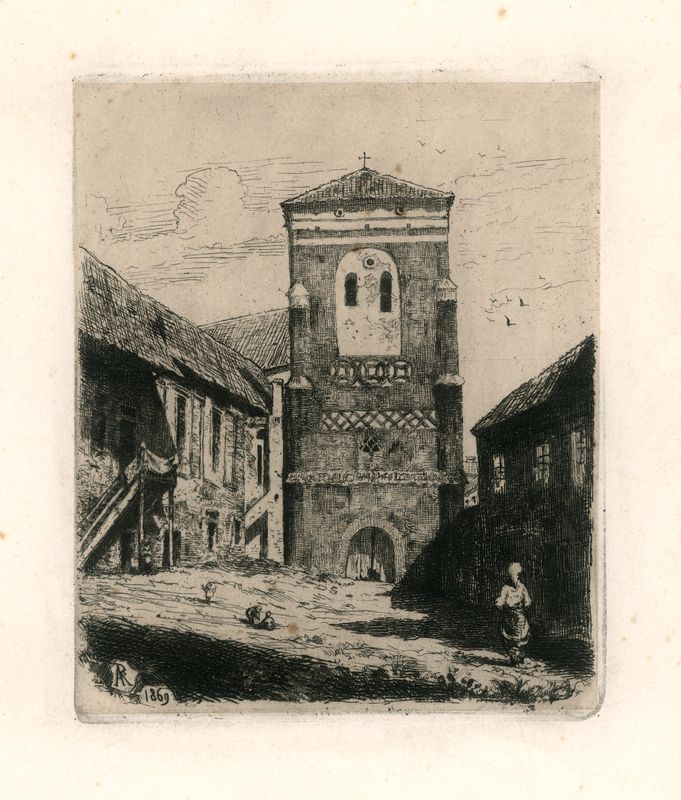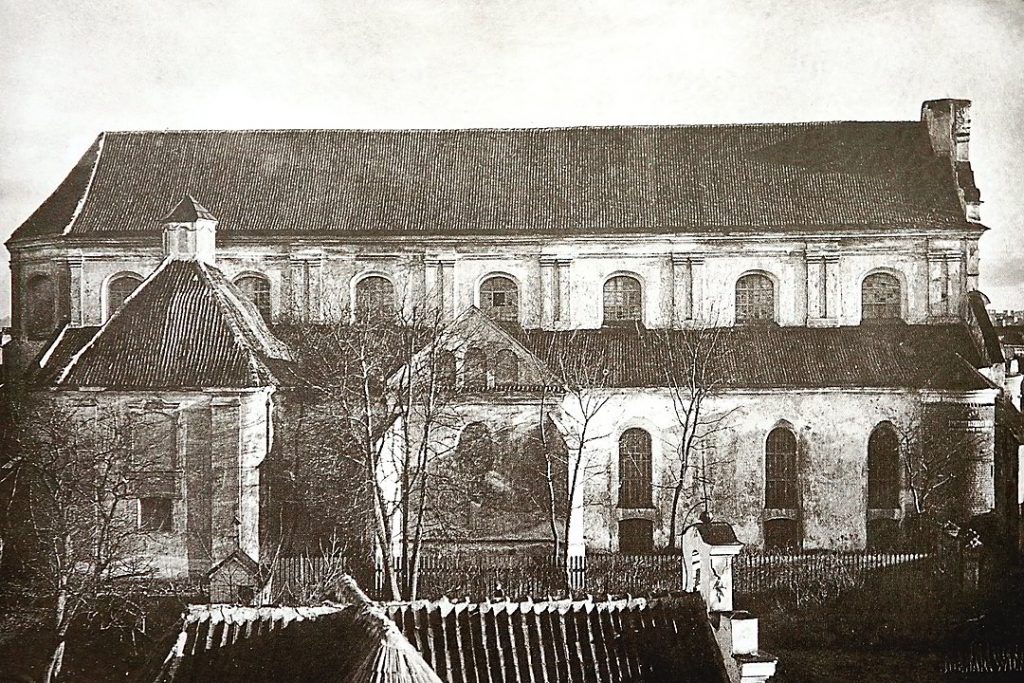Angel’s-eye View of the Franciscan Friary in Vilnius
Franciscan conventuals settled in the Lithuanian capital back in the late 14th century. They enjoyed the patronage of King Władysław II Jagiełło and the leader of the city’s German community Hanul. In 1387 Hanul entrusted the Franciscans with the Church of St Nicholas and since then they took good care of the oldest Catholic place of worship in Lithuania and did much to ensure its preservation.
Later rulers Vytautas the Great and his brother Sigismund Kęstutaitis continued to support Franciscans. They donated several lakes around Vilnius: Vytautas gifted them with Papys (Šalčininkai district) and Minkeliai (Vilnius district), Žygimantas ascribed Dekys, Šiemetys, and Šiemetukas lakes, located between Vievis and Trakai. Their fish helped the Franciscans to endure many fasts that were stricter and longer than those of today.
Experts in memory preservation
Do You Know?
After the baptism of Lithuania in 1387, the Franciscans were among the first to teach the neophytes that acts of goodwill would ensure that their names, and even those of their relatives, were inscribed in the heavenly Book of Life. Those listed would eventually go to the land of eternal happiness, while the rest would agonise in hell for eternity. The book is to be opened during the Last Judgment but the tickets to this apocalyptic drama are available right now.
In fact, Franciscans kept a Book of Life of their own, where they listed their benefactors and mentioned them during mass.
The size and value of the gift was of little importance, because the monks aided men and women of all classes.
“
Sometimes goodwill was made official. On 25 February 1444 Wasko Sakowicz signed an agreement to donate ten barrels of wheat, one barrel of peas, and one pig yearly in exchange for prayers for himself, his wife Milokhna, and their children.
Back then, lay people deemed such cooperation very meaningful. A number of magnate families turned their patronage of local Franciscans into a tradition sustained over generations. The affluent supported them by consigning a part of their income, instead of making land donations. Sometimes goodwill was made official. On 25 February 1444 Wasko Sakowicz signed an agreement to donate ten barrels of wheat, one barrel of peas, and one pig yearly in exchange for prayers for himself, his wife Milokhna, and their children.
Wealthy Vilnans did their best to enter the books of life. Maciej Walach and his wife were famed for their generosity once they consigned landed property in Nemėžis to Franciscans in 1422. Theirs was far from a singular example, in 1468 Vilnius Burgomaster Lukas donated them a land in Lukėnai. Apart from that, he was the first known resident of Lithuania to leave us a written piece of his poetic inspiration: “While constantly keeping vigil, we wish to meet the Holy star-bearing Lord in his heavenly city” (an excerpt from Uranica Civitas).
Friary turned market
“
Come autumn and dozens upon dozens of carts would line next to the Franciscan friary with which people from and around Vilnius shared all kinds of produce, from rye, buckwheat, and beans to meat, fish, live animals, and poultry. Snorting horses, lowing heifers, and grunting pigs disturbed the usual tranquillity of the friary. Among other things, the laymen took the chance to talk, pray, and share a meal with the Franciscans.
Heaven-sent dreams matched the abundance of earthly goods perfectly. Come autumn and dozens upon dozens of carts would line next to the Franciscan friary with which people from and around Vilnius shared all kinds of produce, from rye, buckwheat, and beans to meat, fish, live animals, and poultry. Snorting horses, lowing heifers, and grunting pigs disturbed the usual tranquillity of the friary. Among other things, the laymen took the chance to talk, pray, and share a meal with the Franciscans.
A number of benefactors and pilgrim donations amounted to substantial amounts of money; therefore, it is no wonder that already in the first half of the 15th century Franciscans were able to finance one of the most beautiful Gothic churches in Vilnius in a comparably short time. After seeing it with their own eyes in 1456, three envoys of the Order of the Holy Ghost visiting from Rome pronounced it most honourable ‒ venerabilissima.
Plague, the first cause for concern
Guardian angels could hover in nearly undisturbed peace over the Franciscan friary and church in Vilnius throughout the 15th and 16th centuries. There was only one exception, however short-lived.
A false rumour spread in 1552 when plague ravaged Vilnius that the malady spread from the Franciscan friary, because its residents failed to inform the municipality about the outbreak. It caused hysteria, because the plague put the visiting King Sigismund Augustus and top officials of the Grand Duchy of Lithuania at mortal risk.
Found guilty of negligence, albeit groundlessly, the Franciscans were deprived of lands around their friary and outside the city. Allegedly, Vilnius Wójt Augustinus Rotundus was one of the key figures behind the rumour. Despite his support for the counter-reformation movement and strong statehood of the GDL, this rumour earned him a bad name in the collective memory of Vilnius Franciscans.
Mishaps in the 17th century and later
In economic terms, the 1610 fire and the Muscovite occupation of 1655-1661 shook the financial foundations of the Franciscan community. In the early 18th century, they, just like the rest of the nation, suffered another calamity in the form of the Northern War that raged between 1700 and 1721 bringing famine and numerous outbreaks of infectious diseases.
“
The chapel did not shelter Franciscans against another outbreak of plague in 1710. The pandemic killed no less than 22 brothers, almost all residents of the Vilnius friary. It is no wonder then that the friars later termed the year 1710 “most unfortunate”. Hardly recovered, the friary was devastated by a huge fire in 1737.
In an effort to appease the heavenly wrath, Brest Master of the Horse Michał Suzin, a pious noble, built a chapel (1707–1708) in the inner yard of the Franciscan church, dedicated to the Suffering of Christ. He chose the spot where a pillar topped with a statue of pensive Christ has long stood. It did not survive long, but the brick chapel has reached our days and stands on the corner of Trakai and Fransciscan Streets in Vilnius.
The chapel did not shelter Franciscans against another outbreak of plague in 1710. The pandemic killed no less than 22 brothers, almost all residents of the Vilnius friary. It is no wonder then that the friars later termed the year 1710 “most unfortunate”. Hardly recovered, the friary was devastated by a huge fire in 1737. Flames devoured the church and only four main walls and two vaulted side chapels survived. Despite that, it took only three years for the Franciscans to rebuild their house of worship. On 2 December 1739 they welcomed the arrival of relics of St Ivon, the patron saint of lawyers, and the body of St Victor the Martyr, both were brought to Vilnius by brother Wawrzyniec Drongowski from his studies in Rome and presented as a gift to his friary.
Bring in more relics!
Soon it became clear that the Franciscans as well as their supporters and friends wished for a more intimate contact with their “heavenly patrons.” Around 1750 Vilnan Franciscans launched a coordinated effort aimed at attaining relics of martyr saints Pius, Modestin, Grata, Serena, Diodorus, and Concordia, all buried in the St Helena Catacomb Cemetery in Rome. Even more relics arrived the following year yielded, including those of St Joachim (the father of Mary, mother of Jesus), St John the Baptist, St Augustine, St Gregory the Great, Pope Pius V, St Anthony the Abbot, St Benedict, St Paul the Hermit, St Cajetan, St Roch, St Leonard, St Dilectus the Martyr, St Joseph of Leonessa, St Jacob Pisani, St Stanislaus, and St Thomas Aquinas. All relics bore proofs of authenticity.
“
In the second half of the 18th century Vilnan Franciscans carried out a number of grand and costly projects. They merged the buildings of their friary into a huge complex, erected a belfry next to the St Nicholas Church, and bought it new pews and an organ. Another large and beautiful organ was installed in their own Ascension Church.
In the second half of the 18th century Vilnan Franciscans carried out a number of grand and costly projects. They merged the buildings of their friary into a huge complex, erected a belfry next to the St Nicholas Church, and bought it new pews and an organ. Another large and beautiful organ was installed in their own Ascension Church. Until the closing of the church in 1864, its old Gothic belfry housed the Ciechanovicz Bell, named after the Franciscan friar who had funded its casting in the 17th century.
The most important recent development took place in 2017, when the court of law concluded the almost two-decade-long legal wrangling by reinstating the Franciscans’ full ownership over their property in Vilnius.
By Darius Baronas






